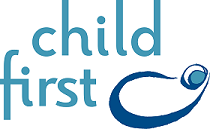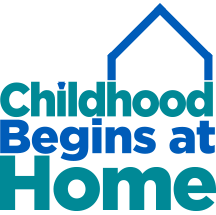
Child First helps to heal and protect young children and families from the effects of chronic stress and trauma by fostering strong, nurturing relationships, and connecting families with needed services. Research shows this model:
Reduces abuse and neglect, as well as the likelihood of experiencing traumatic events during childhood by utilizing a relationship-based approach to enhance parent-child interactions.
- Child First reduces suspected child abuse and neglect. [Lowell, D. I., Carter, A. S., Godoy, L., Paulicin, B., & Briggs‐Gowan, M. J. (2011). A Randomized Controlled Trial of Child FIRST: A Comprehensive Home‐Based Intervention Translating Research into Early Childhood Practice. Child Development, 82(1), 193-208. https://doi.org/10.1111/j.1467-8624.2010.01550.x]
- Child First decreases child likelihood of experiencing traumatic events. [Crusto, C. A., Lowell, D. I., Paulicin, B., Reynolds, J., Feinn, R., Friedman, S. R., & Kaufman, J. S. (2008). Evaluation of a Wraparound Process for Children Exposed to Family Violence. Best Practices in Mental Health, 4(1), 1-18. [https://www.ingentaconnect.com/content/follmer/bpmh/2008/00000004/00000001/art00002 – Refs]
Improves children’s abilities to interact and connect with others by improving social-emotional functioning, reducing behavioral problems, and increasing language skills.
- Child First reduces language, social-emotional, and behavioral problems. [Lowell, D. I., Carter, A. S., Godoy, L., Paulicin, B., & Briggs‐Gowan, M. J. (2011). A Randomized Controlled Trial of Child FIRST: A Comprehensive Home‐Based Intervention Translating Research into Early Childhood Practice. Child Development, 82(1), 193-208. https://doi.org/10.1111/j.1467-8624.2010.01550.x]
- Child First improves emotions and behaviors that affect overall well-being and decreases child prevalence of post-traumatic stress characterized by intrusive thoughts and avoidance problems. [Crusto, C. A., Lowell, D. I., Paulicin, B., Reynolds, J., Feinn, R., Friedman, S. R., & Kaufman, J. S. (2008). Evaluation of a Wraparound Process for Children Exposed to Family Violence. Best Practices in Mental Health, 4(1), 1-18. [https://www.ingentaconnect.com/content/follmer/bpmh/2008/00000004/00000001/art00002 – Refs]
Increases family access and utilization of community-based services by developing a system of care approach to provide comprehensive, integrated services and support.
- Child First improves access and utilization to services related to child and adult mental health, child development, early education, family support, and medical needs. [Lowell, D. I., Carter, A. S., Godoy, L., Paulicin, B., & Briggs‐Gowan, M. J. (2011). A Randomized Controlled Trial of Child FIRST: A Comprehensive Home‐Based Intervention Translating Research into Early Childhood Practice. Child Development, 82(1), 193-208. https://doi.org/10.1111/j.1467-8624.2010.01550.x]
- Child First increases family access and satisfaction with needed services In the community. [Crusto, C. A., Lowell, D. I., Paulicin, B., Reynolds, J., Feinn, R., Friedman, S. R., & Kaufman, J. S. (2008). Evaluation of a Wraparound Process for Children Exposed to Family Violence. Best Practices in Mental Health, 4(1), 1-18. [https://www.ingentaconnect.com/content/follmer/bpmh/2008/00000004/00000001/art00002 – Refs]
Child First serves families in Philadelphia County.
